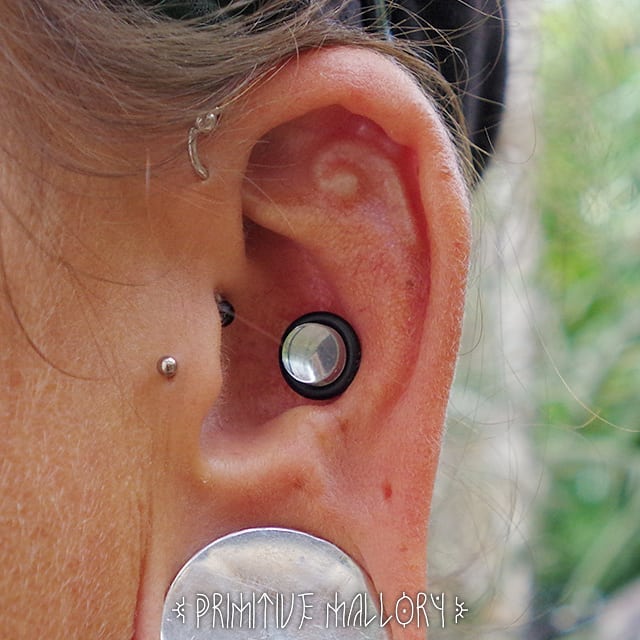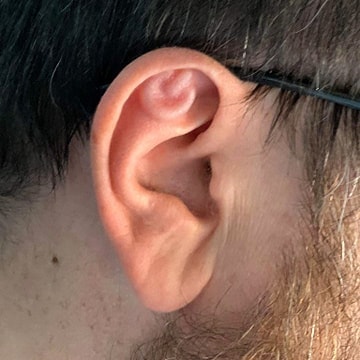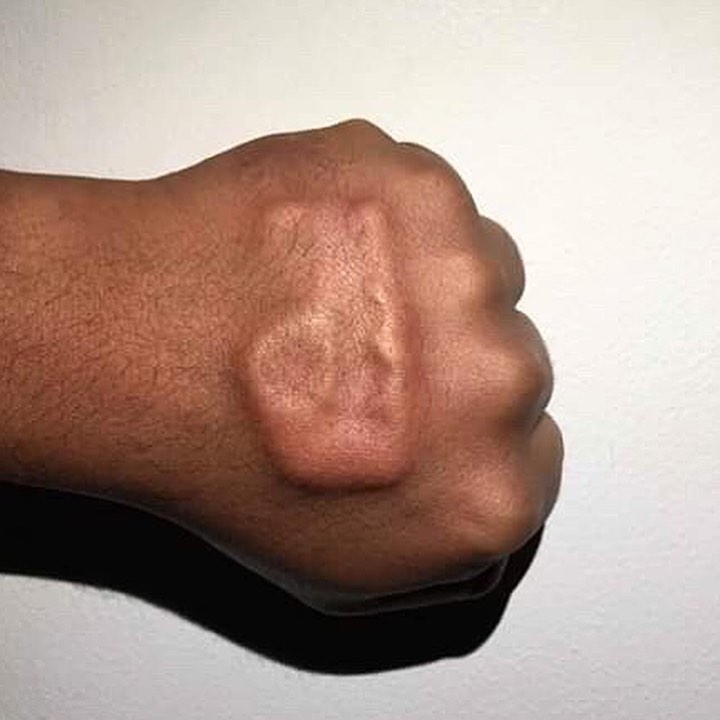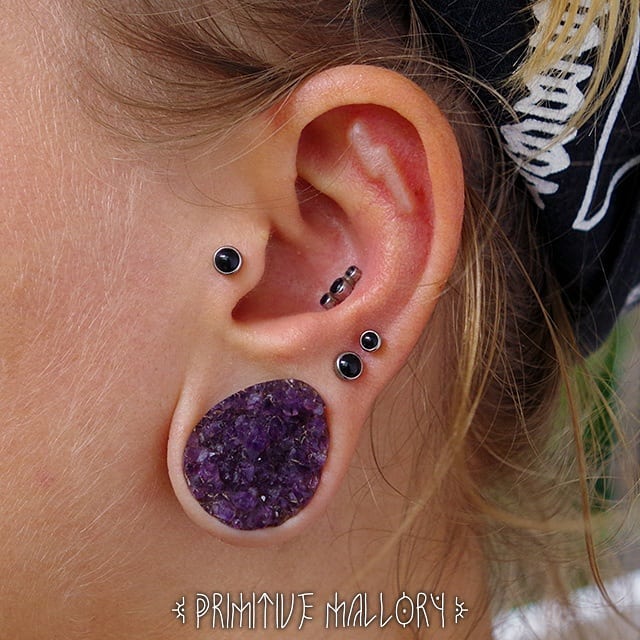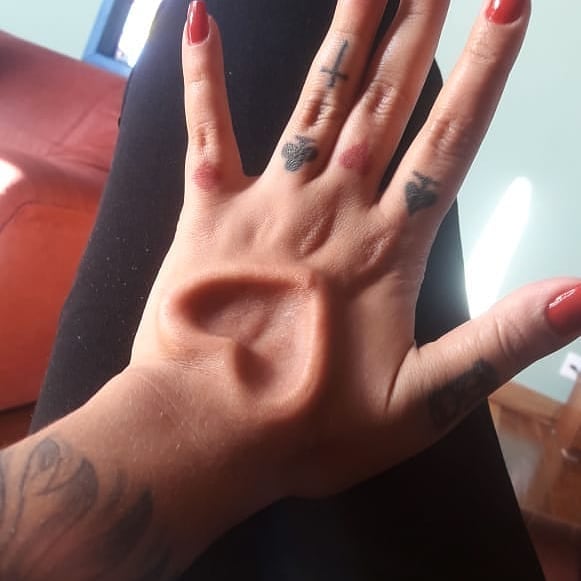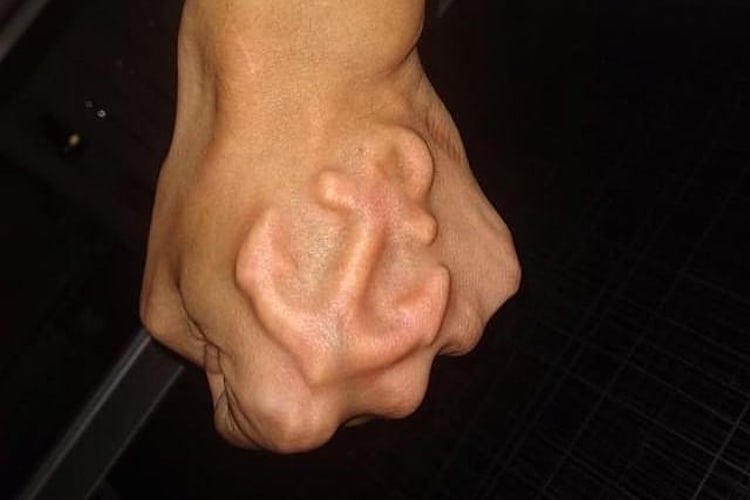As far as body modification goes, tattoo artist Steve Haworth performed the first subdermal implant procedure in 1994. He was requested to design something new by a customer from abroad – a bracelet that wasn’t like anything he had ever seen before. The always-trendsetting Haworth proposed an unusual procedure in which he would insert beads under her skin to resemble a bracelet in three dimensions.
Subdermal implants have gained popularity in the last few decades, with their rapid growth leading to new, creative expressions and more refined practices. It is worth noting that the trend is rife with controversy and there are dangers associated with subdermal implants.
In thsi article, we would cover all that there is to know about subdermal implants. However, before you plan on taking thsi experiment to the personal level, we would suggest that you read the article thoroughly and consult yrou physician before you mank any kind of modifications that can taper your health.
Understanding Subdermal Implants
Contents (Click to Jump)
Typical body modification trends do not involve subdermal implants. It takes actual surgery to implant these implants instead of more traditional tattoos or piercings.
In this procedure, the artist makes a deep cut into the fat layer beneath the skin, cutting through the subcutaneous tissue. Afterward, he or she uses a dermal elevator or dermal separator, both of which are long thin devices. A spatula-like tool is used to separate subcutaneous fat from the fascia, creating a cavity, or insertion pocket, into which the implant may be placed.
The incision is stitched once the subdermal implant has been inserted. Additionally, the artist may use surgical tape or a pressure bandage to hold the implant in place over one or two weeks. After healing is complete, the skin takes on the shape of the implant, creating the illusion that it is an integrated part of the body.
Implants are placed under the surface of the skin much like subdermal implants. Nevertheless, there is still a portion of the implant visible above the skin. Typically, the underside of the implant has holes for the skin to grow into, which makes the implant permanent. It is often necessary to tape the incision close around the exposed portion of the implant when using suture tape
Types of Subdermal Implants
A subdermal implant is either a subdermal (or subcutaneous) implant or a transdermal implant depending on the Church of Body Modification. It is also possible to get a magnetic subdermal implant. For transdermal implants, dermal punches remove a disk from the skin to create an initial large hole
Subdermal
According to the Church of Body Modification, “Subdermal implants” are completely buried beneath the skin’s surface. Several products are used cosmetically as well as medically, including the contraceptive Norplant, which is a series of six levonorgestrel-releasing Silastic capsules positioned under the skin of a woman’s upper arm to provide contraception. Plastic cosmetics can be molded into any shape as desired, though silicone is normally used. Nonetheless, Teflon variants exist as well.
Transdermal
A transdermal implant is attached to the body part under the skin and partially exposed to the atmosphere. Known as “dermal punching”, this is accomplished by pricking the skin. To place an implant, the upper and lower layers of skin must first be separated. An implant’s undersurface tissue must be formed properly so that it will fit under the skin. The body will be able to grow around it if there are holes in the cap (like figure eight). Using a dermal punch, the part that will protrude from the implant is exposed once it is placed.
Microdermal implants
Unlike transdermal implants, body mods offer the aesthetics of transdermal implants without the complications of the much more complicated surgery associated with them. As a type of surface piercing, micro dermal are single point piercing.
Unlike conventional piercings, micro dermal implants can be placed practically anywhere on the surface of the skin on the body; they differ from conventional piercings, however, in the fact that they consist of two components. Essentially, one anchor is implanted beneath the skin with the step protruding above (or flush with) the surface of the surrounding skin, and the jewelry in the step of the anchor is screwed into a threaded hole in the step. Any area that is not flat or near a joint, such as hands, feet, wrists, collarbones, or other parts of the body, should not be implanted with them.
Applications Of Subdermal Implants
Here are certain applications of subdermal implants. It means that we will discover all the usage and application of this kind of modification in this section of the article. Take a look:
Electronic implants
An electronic device that is subcutaneously (subdermally) implanted in a human is known as a microchip implant. Infrared identification devices such as ICs encased in silicate glass that is implanted in the body of a person are examples. Subdermal implants of this type contain unique identifiers, which can be linked to additional information in external databases, including personal identification details, law enforcement information, medical history, medication information, allergies, and contact information.
Cosmetic implants
In terms of aesthetic implants, they range from small implants that become part of the body under the skin to LED light implants that glow under the skin.
Genital implants
It’s possible to stimulate both sexual partners with subdermal implants placed under the skin of the penis. A common form of genital beading uses round, small implants. There are also rods called “genital ribs” that are short, curved rods.
Braille tattoo
Student Klara Jirkova of Berlin University of the Arts suggested the possibility of creating “Braille tattoos” for people who are blind using subdermal implants. In her proposal, small implants can be grouped into braille characters, which will be able to be read by blind people through touch using a stroke. The author suggests that “Braille tattoos” could help the blind identify whom they are greeting if they are located nearby the thumb where they could be read during a handshake. As it is a form of body modification that is based on the sense of touch rather than the sense of sight, she says this is a more meaningful form.
Even though Jirkova’s proposal received media attention, this application of subdermal implants can at best be considered impractical. The use of a braille tattoo as a means of identification among the blind would be superfluous since they can easily determine whose are their friends by speaking with them. It would be unlikely for implants to heal correctly following such a procedure since they would shift during healing. According to Jirkova, smooth, round implants are most susceptible to shifting, so it is likely that a “Braille tattoo” would migrate to the point that it would make it impossible to read. The image of the “Braille tattoo” most commonly seen today is a photo manipulation of Jirkova’s report, not an actual modification of the text.
The problem of readability would be solved by flat silicone “character” sheets with prepositioned dots, regardless of the migration risks associated with individual ball implants. Individual square sheets could be formed and implanted in a predetermined pattern.
21 Ideas for Subdermal Implants
In this section, we would talk about the various ideas from which you can take some inspiration. The pictures we have found represent the people who have gone through subdermal implant modification and how it will look on them. Thus this part forms a geta example for people who are thinking to get one for themselves.
-
Spiral Design
-
Skull Design
-
Star Design
-
Ear Design
-
Turn On Design
-
Hand Design
-
Star Design
-
Moon Design
-
Lightning Design
-
Hand Subdermal Design
-
Heart Design
-
Tribal Design
-
Star Ear Design
-
Triangle Design
-
Arm Design
-
Full Arm Ring Design
-
Hand Design
-
Star Design on head
-
Thumb Design
-
Anchor Design
-
Glow in the Dark Design
Is It Safe?
As you understand the nuts and bolts of the procedure, you probably wonder whether it’s okay to be placing things under your skin.
In the medical field, subcutaneous implants are not uncommon. Implants under the skin are, in essence, subdermal implants. In these procedures, silicon structures are inserted under the skin to modify an area’s shape and size. A pacemaker is one example of a technology that surgeons create in the skin. It is becoming increasingly common to use subdermal contraceptive implants, and new technologies, including this one to treat HIV, are pushing the boundaries of the technology.
Shortly put, taking synthetic materials under the skin as part of a medical procedure or cosmetic procedure is neither unusual nor particularly harmful. However, that doesn’t mean that subdermal implants for body modification don’t pose significant safety risks.
Risks and Complications
In addition to tattoos and piercings, subdermal implants are lumped together as unconventional body modification procedures. In light of this, the fact that people have plastic surgery done in tattoo shops rather than clinics does not seem strange to them.
When the procedure detailed above is performed, deep incisions are made with a scalpel. What does it hurt like? According to Haworth on his website, it’s painful during the procedure as well as during the healing process. Despite your “surgeon’s” claim, the real reason that you won’t get anesthesia is that s/he is not a licensed medical professional and therefore neither has access to nor is authorized to administer it.
If the pain does not turn you off, visualize the procedure taking place in a studio that was not properly sterilized. Most practitioners of body modification take great care to perform their work in a sterile environment; however, many tattoo artists and piercers, regardless of how well they are trained and creative, lack the training or resources they need to adhere to such medical protocols.
In addition, the quality of the material beneath your skin may not be up to par. Unlike medical grade silicone breast implants and other materials of this type that are highly regulated, body modification implants are not subject to as much research and testing as those for medical-grade implants.
There is no doubt that body modification carries substantial risks, and that the procedure is often performed in a non-sterile environment by an individual untrained in doing so only exacerbates the risks. Complications from the procedures listed below are both quite common and extremely rare. However, all should be taken seriously.
- Infection. There are many ways in which this can happen. A poorly sterilized room could be the cause of the infection. An item made from silicone that has been pre-carved could hide bacteria. Poor aftercare could also lead to infection after the procedure.
- Nerve damage. In reality, this may mean damage to the nerves, muscles, or lymph system. Any of these physical features can be put under pressure by an implant, affecting its function and resulting in bruising or fluid retention. Pain is also typically associated with this.
- Implant rejection. An implant will be naturally pushed from the body in the same way that a splinter might be pushed from your thumb. An implant has been placed improperly, is too large, or has outward-facing points, which can result in this problem. Some patients suffer severe scarring as a result of this complication.
- Negative reaction to materials. A couple of ways are available for this to occur. There may be biocompatibility issues with the material. It is for this reason that certain materials tend to be preferred, usually silicone. However, if the quality of the materials is inadequate, otherwise acceptable materials could be problematic. Additionally, people may experience allergic reactions to their implants. If you’re usually allergic to the material, you may experience symptoms even if you’re not. There are varying degrees of severity among these allergies.
- Tissue resorption. Do you remember when your dentist told you that you should stop brushing so hard because your teeth were receding? With subdermal implants, this eroding of tissue can also occur as a result of friction over time. For a long time, you are forced to rub against the foreign object, wearing it away. It can happen over decades, or it can happen over months. You may not be aware that this is happening to your muscles until the damage has been done and, in some cases, the implant has become exposed. This is likely the most common and least known complication, according to the Body Modification Encyclopedia.
A subdermal implant that goes wrong tends to go very wrong. Those who have experienced implant rejection, tissue resorption, or infection have sometimes had to undergo further surgery. This can include skin grafting and disfigurement.




